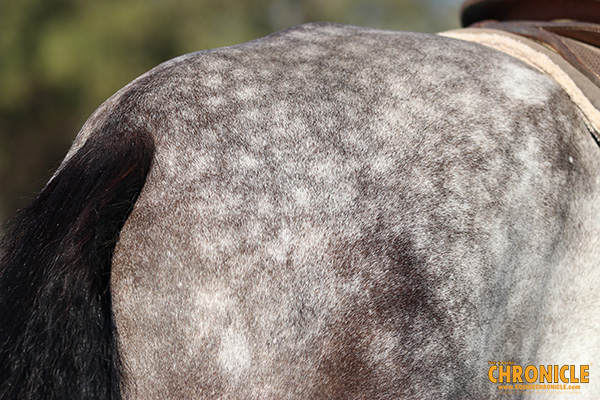Help Your Horse Shed Its Winter Coat

By: Taylor Fabus, Michigan State University Extension
As spring draws near, horses will begin to shed their thick winter coats. Consider these suggestions to speed up the process or to just help your horse along.
In order to help your horse shed its thick winter hair, it is first important to understand what makes its hair grow. Although hair growth generally coincides with colder temperatures, it is primarily the amount of daylight hours that affects a horse’s hair growth, or lack thereof. As the daylight hours and temperatures slowly start to decrease in autumn, you may notice your horse starting to grow a soft fuzzy coat over their short, slick summer coat.
Likewise, as the daylight hours and temperatures begin to increase in the springtime, you will notice that the thick, long winter hair starts to shed. It is actually the horse’s pituitary gland that recognizes this change in daylight hours and produces hormones that cause a horse to shed its winter coat.
If you are looking to speed up the shedding process, adding light and vigorous grooming can help.
First, by adding artificial light to a horse’s environment, likely their stall, you can fool the horse’s body into thinking it’s closer to springtime than it actually is. This can cause the horse to shed its hair coat earlier than it naturally would. It is important to remember that the environmental temperatures may require extra blanketing or protection to keep your horse comfortable with their new hair coat.
The light source should be turned on to supply enough additional light to produce a total 16 hours of daylight (natural and artificial). Perception of day length must be constant from day to day; using automatic timers can make this task easy. Light intensity should be comparable to one 200-watt bulb for a 12-foot by 12-foot stall.
Also, too much light will not speed up this process, so do not add too much artificial light. It will take the horse approximately 60 days before you start to notice the effects of the light (i.e., increased shedding); this should be taken into account so that you start adding lights at the appropriate time.
Secondly, vigorous grooming can help get your horse’s coat ready for show season. Here’s a great YouTube playlist on grooming for success, brought to you by Extension Horses. In order to make a distinct impact on your horse’s hair coat, you’ll have to do more than the occasional light brushing. It’s currying and elbow grease that will be needed to get this job done!
A curry comb is a useful tool in removing dirt, old hair and debris from your horse. To be most effective, it should be used in a circular motion. You’ll want to be careful when using this brush on areas of the face and below the knees and hocks, as these areas have little to no muscle and are sensitive areas.
Visit this eXtension article to learn even more about proper grooming techniques.
This article was published by Michigan State University Extension. For more information, visit https://extension.msu.edu. To have a digest of information delivered straight to your email inbox, visit https://extension.msu.edu/newsletters. To contact an expert in your area, visit https://extension.msu.edu/experts, or call 888-MSUE4MI (888-678-3464).










